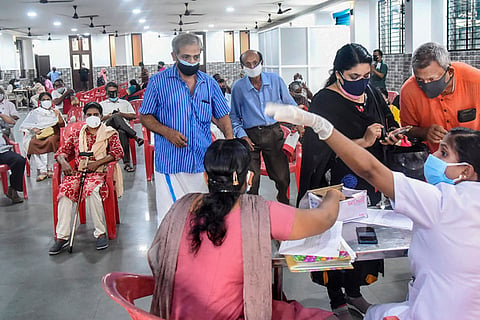Kerala has sensible strategy for COVID-19 but can’t relax now: Virologist Gagandeep Kang
On Thursday, July 29, India reported 43,000 new COVID-19 cases, with 50% of them being reported from Kerala (22,056 on July 28). Incidentally, Kerala also has the lowest percentage of seroprevalence in India, said the Union government on Wednesday, July 28, based on the fourth national serosurvey by the Indian Council of Medical Research (ICMR). In Kerala, the seropositivity, which indicates the presence of antibodies in the blood in response to an infection, stood at 44.4%, lower than the national average of about 70%. This means that over 50% of Kerala’s population is still uninfected.
“The large number of COVID-19 cases in Kerala and the low seropositivity compared to the national scenario is a result of the state’s outstanding job in flattening the curve early on in the pandemic,” senior virologist and microbiologist Gagandeep Kang said. “However, Kerala cannot relax now,” she warned.
In an interview with journalist Karan Thapar for The Wire, Gagandeep Kang credited Kerala’s “sensible strategy” in controlling the spread of the infection, including its vaccine coverage and testing strategy. “A greater proportion of Kerala’s low seropositivity is contributed by its vaccination,” she said. As of July 27, 22% of the eligible population has been fully vaccinated in Kerala, with at least 50% of them getting at least one dose, when compared to the national average of about 8% (two doses) and about 25% (single dose).
Noting that Kerala has a “smart testing” strategy, Gagandeep said attributed targeting testing for the state’s high test positivity rate, which shows the proportion of people in a group of 100 who test positive for the virus. “Kerala targeted the testing to contacts and location, which can help better identify real cases,” said Gagandeep, who is a professor at the Christian Medical College (CMC) in Vellore.
On July 28, Kerala’s TPR stood at 11.2%, while it was 1.03% and 1.2% in the neighbouring states of Karnataka and Tamil Nadu. While Tamil Nadu and Karnataka have been testing more than one lakh samples daily, Kerala, too, has been testing a similar number of samples (1.45 lakh on a weekly average), although more antigen tests than RT-PCR tests. “West Bengal, which has a larger population than Kerala and has lesser TPR, is doing fewer tests,” she said. West Bengal, which reported a TPR of 1.81% on April 28, has been testing an average of 45,144 samples in the past week.
However, Gangandeep said Kerala targets testing in areas where there are more infections, although there is no specific data on this. “The problem comes when a number is set, which has to be adhered to. For example, safe TPR is maintained at 5% and it becomes favourable if that is the only factor used to measure success. Many states target testing in areas where the positivity yield is poor and where the disease spread is low. As a result, the TPR comes down. If more testing is done where diseases are high, the TPR will go up,” she explained.
Kerala, however, was not getting every aspect perfectly fine, said the senior virologist, referring to the recent relaxations in view of Bakrid and the election rallies in early 2021 in Kerala. "It was not the right way to go," said Gagandeep. “However, states like Tamil Nadu and Kerala are doing well to not overwhelm their healthcare system and test better,” she said. The bed occupancy and ventilators in Kerala have been at a comfortable level for the state’s healthcare system.
“The mortality rate, too, is not relatively higher than other states, at least from what is being officially reported. It is indicative of a well-functioning health system functioning,” she said. Kerala’s case fatality rate (proportion of patients dying in a group of infected persons) is 6.5% as of July 28.
She also noted that Kerala was one of the first states to have started genome sequencing, though the Delta variant reached Kerala later than other parts of the country.
Kerala’s R rate, the reproduction rate of the virus, is above 1, which is a concern and an indication that more needs to be done. "Kerala cannot afford to let the R factor rise. The interventions that Kerala deploys today will show up in R factor (lowers) in the next two-three weeks. If the R factor is above 1, it needs to think of other non-clinical interventions, such as restrictions on travel and movement, better isolation and quarantine facilities, and improving vaccine coverage,” she said.
With over 50% uninfected and unvaccinated, it could fuel the pandemic further. “Overall, Kerala is doing a good job in testing, healthcare and vaccination, and is not a threat to the rest of the country. However, Kerala cannot afford to relax now,” she said, adding that the state should continue to be careful, monitor the cases and do more tests.
“I would ask Kerala to give us more data on what tests are being done and where, how many are RT-PCR and antigen tests, and the purpose for doing these tests. Though the state is doing the targeted tests, we don’t have a breakup, for example, by district level. We can match this against the seropositivity rate to see the level of control required for each district,” she said.
Watch the full interview:

